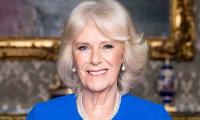The transformation that has taken place at Match Group since I first began working here, 12 years ago, is incredible to contemplate. Back then dating websites were accessible only from a desktop or a laptop. They often required monthly fees and a lot of patience from users, who scrolled through profiles and waited for responses. Online dating also carried a definite stigma, so if a couple had met on Match.com, they often lied and said they’d met “through friends.”
Over the past decade, significant industrywide shifts in technology and business models have occurred — the biggest one being mobile. They have completely changed the way people use our products, which now run almost entirely via apps and smartphones. Those product changes have been accompanied by an attitudinal shift: In the New York Times Weddings section on Sunday, people now routinely mention the dating app on which they met. Research shows that 35% of marriages start online, up from around 3 percent when I began working here.
Each shift has made us completely rethink our approach. I’ve built my career trying to develop consumer insights and use them to create appealing new products. Match Group is a great place to do that.
When I got the recruiting call from Match, the company was looking for someone who had a background in marketing to run Chemistry.com, the startup it had launched to compete with eHarmony. To join eHarmony, users had to fill out a lengthy psychological profile, and the site’s stated mission wasn’t to help people date but to help them marry. Because Match wasn’t set up explicitly for finding spouses, eHarmony caused its image to change: Match.com became seen as a site for casual dating, whereas eHarmony was for “serious” dating. I ran Chemistry.com from 2006 to 2008. It was my first general management job, and I loved building the team. We grew the site quickly.
But even as Chemistry.com expanded, Match.com seemed to be plateauing. So in 2008 management asked me to move over to Match.com and try to re-energize that brand.
Two important shifts were under way that hurt Match.com. First, OkCupid and Plenty of Fish, recent entrants, had pioneered a new business model: Instead of charging users monthly fees, they relied on advertising for revenue. The second shift involved algorithms. By 2008 companies were getting more sophisticated about analyzing and understanding users’ preferences and behavior.
We began hiring more data scientists and changing our algorithms to more closely track users’ actual behavior. We also began to encourage them to send messages or likes or winks, rather than just peruse profiles.
In 2009 Match made its first big acquisition, in the form of a company called People Media. Unlike Match, which ran just two websites, People Media had a variety of smaller sites aimed at specific demographics — for example, BlackPeopleMeet.com and SeniorPeopleMeet.com (now called OurTime.com). Facebook and Twitter were bringing more people onto social media, which sparked more interest in online dating, especially from older people. If it was suddenly socially acceptable to meet friends online, why not dates? As the age range of our users began to broaden, providing sites that appealed to various demographics became more important.
Over time, Match acquired other brands, including OkCupid and Plenty of Fish. Today we have dozens of dating products that operate around the world.
Without a doubt, the biggest technology shift came after 2008. That’s when Apple introduced the App Store. Most dating platforms began migrating away from desktops and onto apps. Within a few years that completely changed the face of our industry — a change sparked largely by Tinder.
In 2012 Tinder came out of an incubator that IAC, Match’s parent company, had started; it’s now part of our portfolio. It was very different from existing dating products. From the beginning, it was designed for smartphones and existed only as an app. Tinder was location-based, so users could see who was nearby. Instead of long profiles, Tinder relied on photos and a very short bio. Its biggest innovation was swiping — swipe right if you find someone attractive, left if you don’t. When two people swipe right on each other, Tinder notifies both of the mutual attraction.
Tinder introduced its product at a number of universities. It went viral among college students. Before Tinder, relatively few people under 30 used online dating. Today Tinder has tens of millions of users, and the majority of them are between 18 and 25.
Most dating apps, including Tinder, have shifted to a “freemium” or paywall strategy. Joining is free, and users get basic functionality. They can opt to pay for premium features such as seeing who likes you and swiping in another city. Last year Tinder’s revenue topped $800 million, demonstrating that many people are willing to pay for these features.
By 2017 I had led some of Match’s biggest brands, and the board asked me to become CEO. Today I spend much of my time trying to understand what customers want and need from our products and how we can innovate to help satisfy those needs even better.
Right now we’re working on several new strategies that we expect will drive our next phase of growth. The holy grail of our industry is finding ways to use technology to better predict whether that chemistry will persist in real life. If a company could reduce the number of unsuccessful dates, customers would be even more satisfied.
Video is one of the best tools. Millennials post videos of themselves on Instagram and Snap, so they’re naturally comfortable with the format. We’ve begun allowing users to post video snippets on Tinder, where users tend to be younger; for our brands where users tend to be older and less comfortable posting videos of themselves, we’re working to find more natural ways to let their personality come through on video without their feeling embarrassed.
We’re also expanding in international markets where online dating is less mature. Markets across Asia tend to have lots of young singles with smartphones and evolving dating norms. In Japan, until recently, a stigma was still attached to online dating. We bought a brand called Pairs, which is the top app for serious dating in Japan, and it’s been growing quickly.
Match Group has a lot of scale and expertise, and we’re trying to use those advantages to be smarter and faster than our competitors. We need to keep innovating, because this is meaningful work. There’s an epidemic of loneliness in the world. People are beginning to understand the health implications of that, and we need to address it.
A disabled man casting his vote in Indian elections on May 1, 2024. — X/@CEOMPElectionsNOIDA: To go back home in...
People attend the 2023 Spring Meetings inside the International Monetary Fund in Washington, US, April 12, 2023. —...
A representational image showing a Tesla Model Y during the opening of the Tesla Gigafactory in Gruenheide, east of...
Established in 1998, IceWarp has presence in more than 100 countries and provides specialized and highly...
Women walk past a “Now Hiring” sign outside a store on August 16, 2021 in Arlington, Virginia. — AFPWASHINGTON:...
Reko Diq, one of the biggest yet-to-be-developed copper mines in the world, is also 50 percent owned by the government...







